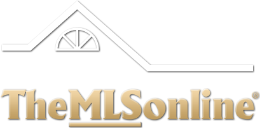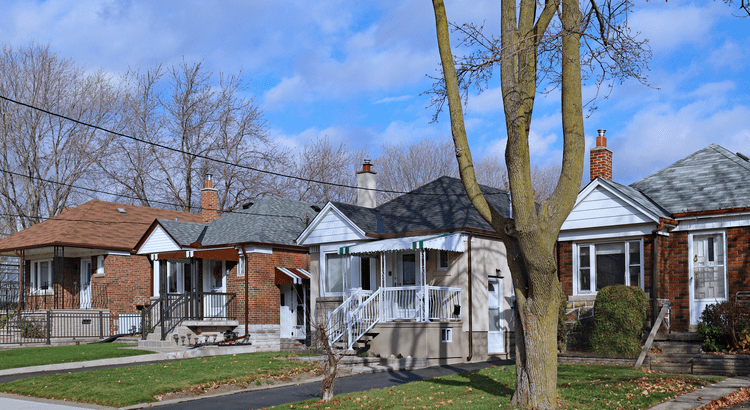Getting ready to sell your house in Minnesota? Our in-depth guide breaks the entire process down into 8 simple steps. Learn how to find a great agent, price your home, negotiate with buyers, breeze through closing, and more! The real estate industry in Minnesota is booming. According to Zillow Research, property values in the Land of 10,000 Lakes rose 3.89% in 2020, and are projected to rise a further 4.34% over the next year. It is a great time to sell a home. Whether hoping to find a bigger home for raising a family, downsizing, or changing locations, market trends point towards a seller’s market.
Want to Learn More?
TheMLSonline.com can help you with all of your Minnesota Real Estate needs.
Read on to learn the 8 steps to successfully selling your home in Minnesota!
- Find the Best Minnesota realtor
- Deciding when to sell home in Minnesota
- Pricing your Minnesota home
- Preparing, marketing, and showing your Minnesota home
- Offers and negotiations
- Appraisal/Inspections
- Paperwork and required Minnesota disclosures
- The closing process
Step One: Find the Best Minnesota Realtor
There are many reasons why working with a great Minnesota realtor is beneficial to sellers. Sellers who decide to work with real estate agents net, on average, 33% more than sellers who list on their own. If you are selling a home in Minnesota for $253,808, which is the median Minnesota home value according to Zillow, that equates to $83,757. This goes to show that hiring an agent is well worth the investment. In addition to the financial benefits of hiring an agent, working with someone knowledgeable in the industry will make the entire process less stressful for you. A realtor will have experience working in the area and can help from the initial listing to closing.
Need Help Finding a Realtor?
TheMLSonline.com can help you find the right Minnesota Realtor.
Step Two: Decide When to Sell Home in Minnesota
In some cases, you have no control over when to sell your home in Minnesota. For instance, if you have to move for a new job, you have little control over when the move will happen. In other cases, such as choosing to downsize or looking for a bigger home, you can choose the time that you will sell. The good news is that houses sell anytime of the year, so if you do not have a choice, that is ok. However, statistics do show that homes sell faster and for more money at certain points in the year. For Minnesota, that month is July. In July, homes generally sell 11 days faster than average and for 3% more than average. Families with children often find July the best time to buy because it gives time to get moved and established before the new school year begins.
Looking to Sell?
TheMLSonline.com can give you an offer for your home within 72 hours.
Step Three: Price Your Minnesota Home
It is incredibly important to price your Minnesota home correctly. If you price the home for less than its value, you leave money on the table. Price it too high, and your listing could sit on the market for an extended period of time. Your best bet is to find the “Goldilocks” list price – not too high or too low, but just right. It is an art form, and an experienced real estate agent can help you develop a pricing strategy by performing a comparative market analysis (CMA). A CMA compares your house to similar properties in the area, looking at factors such as age, size, condition, list, and sale price. Your agent can draw on their own expertise and the CMA to set an ideal sale price, depending on your goals. Whether you are looking to sell quickly, for the highest price, or the best possible combination of the two, having an accurate CMA will give you a great chance to meet your goals.
Want to Find Out What Your Home is Worth?
TheMLSonline.com can provide you with a free home value analysis today.
Step Four: Preparing, Marketing, and Showing Your Home in Minnesota
Preparing your home for sale starts with a deep clean and staging. You will want to get rid of clutter, freshen up paint, and allow potential buyers to envision themselves living in the home. Make sure to hire a photographer to capture your home beautifully. The next step is to create a solid listing description. This description should accurately describe the property and point out the qualities of the home that make it stand out over the competition. Marketing the home should consist of listing the home on as many online portals as possible, creating a video walkthrough, posting the home on social media, creating flyers, and using signage.
Consider holding an open house in Minnesota. These are usually held on weekends and consist of your agent being present at the home and allowing the general public to walk through and ask any questions to your realtor. In addition to an open house, potential buyers will schedule personal showings with their agent. Keep in mind that according to Minnesota Statutes § 513.55, sellers must disclose, in good faith, any issues they are aware of that would negatively impact the property. As the homeowner, you’ll fill out a form that asks about the condition of the property and its systems. Failure to meet disclosure requirements can put a snag in the sale an even lead to legal problems down the road. Speak with your agent to make sure you know what you need to disclose.
Step Five: Offers and Negotiations
Once you receive an offer, you can either accept the offer, reject it, submit a counteroffer, or do nothing. In Minnesota, there’s no deadline to respond. This can be very advantageous to a seller if considering multiple offers. If you counter the offer, the buyer can review your counter and respond with a new offer. This process can go back and forth multiple times. Some common reasons for counter offers include an increase in the sales price, to exclude or add personal property from the contract, boost earnest money deposit, agree to an early release of deposits, change the closing date or possession date, pay more of closing costs, or modify the contingency timeframe. It’s up to both parties and their agents to negotiate until an offer is accepted, or one party drops out. Once you accept an offer, you’ll sign a purchase agreement. The purchase agreement is a contract that includes the negotiated price, financial information, and other terms of the sale. This is also the point when the buyer typically fronts a good faith payment of earnest money, usually about 1-2% of the sale price. This will later be applied to the down payment if the sale goes through.
Step Six: Appraisal/Inspections
It is important to understand that appraisals and inspections are two different things. A home appraisal is performed by an independent appraiser who determines the home’s current value. The buyer’s lender will use the amount determined by the appraiser to conclude if the house can act as collateral for the loan. If the value of appraisal is lower than the negotiated price, the lender will not issue a mortgage. At this point, negotiations can resume or the buyer will need to come up with the additional money to meet the purchase price.
A home inspection is performed by a certified home inspector. This inspection will look for defects in the house. It is quite rare for nothing to turn up during an inspection, especially because of the harsh winters experienced in Minnesota. The most common problems found during a home inspection are with the roof. Depending on what issues are found, negotiations will resume to figure out how best to proceed.
When Do You Need a Home Inspection?
TheMLSonline.com can help you determine when the time is right.
Step Seven: Paperwork and Required Minnesota Disclosures
There is a long list of forms and documents that will be involved in the closing process when selling a house in Minnesota. Be prepared to bring two forms of ID to closing. Documents involved in all closings include a copy of the purchase agreement and any addendums, closing statement, signed deed, bill of sale, and affidavit of title. Other possible documents include loan payoff information, HOA forms and guidelines, survey results or survey affidavits, home inspection results, proof of repairs or renovations, home warranty information, copies of relevant wills, trusts, or power of attorney letters, relevant affidavits, closing disclosure, and a correction statement and agreement. Minnesota disclosure forms are also important documents. These include the seller’s property disclosure statement, flood zone statement, and the lead-based paint disclosure.
Step Eight: The Closing Process
On the day of closing, the buyer, seller, their agents, an escrow or title company representative, and possibly an attorney, will meet to finalize the sale. In Minnesota, sellers can expect to pay between 1-3% of the sale price in closing costs. These expenses include outstanding balances on the home (the remainder of your mortgage, utilities, or HOA fees if applicable), recording fees, settlement and escrow fees, and transfer taxes. The transfer tax is a percentage of the selling price that is split between the state and the county for changing ownership of a property. Part of the money goes into the state general fund and the rest goes to the county for administrative expenses. Be prepared for the largest expense, which is paying agent commissions. In Minnesota, this is typically 6% of the sale price, with 3% going to each of the buyer’s and seller’s agents.
When searching “sell home in Minnesota,” take the time to research and understand these 8 steps. A great realtor can walk you through all of these steps and make the experience less stressful, easier, and more timely. Being proactive will help get you top dollar and allow you to walk away feeling great about the experience.
Ready to Sell?
TheMLSonline.com can help you sell your Minnesota home today.
Ready to Search?
TheMLSonline.com can help you find the right Minnesota home today.
Ready to Buy?
TheMLSonline.com can help you buy your Minnesota home today.








